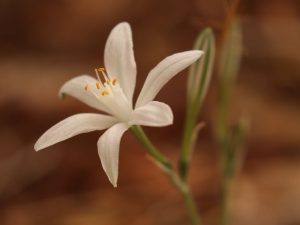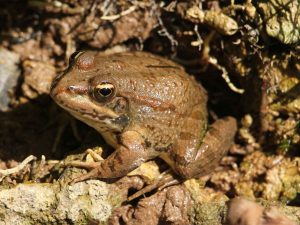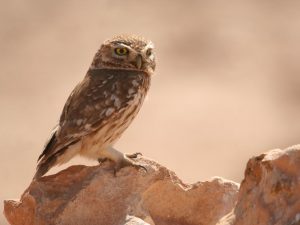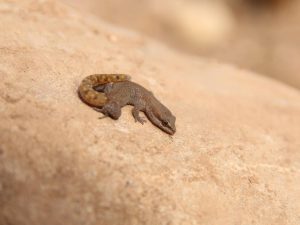
autumn wildlife and easy birding
We explore the landscapes, autumn bulbs and south-bound migrants of southern Morocco, from the ancient Anti-Atlas mountains to the Atlantic coast, enjoying a great introduction to the natural history of the area.
Download leaflet
Dates
To be confirmed
Leaders
To be confirmed
Price
To be confirmed
Included
Return flight from London Gatwick. Local transport as specified in itinerary. Seven nights accommodation, full board.
Not included
Refreshments. Gratuities. Travel insurance. Covid tests and associated costs.
Group size
Minimum 4, maximum 14.
With Mediterranean, Macaronesian and African influences, this area has a fascinating mix of plants including succulent Euphorbias, highly restricted autumn-flowering bulbs, fragrant lavenders and interesting shrubs, including the endemic Argan tree, a keystone of the local culture.
The autumn is a great time to experience the interesting birdlife of the area, with local North African specialities alongside passage migrants from across Europe. We can expect to find all the local specialties, including House Bunting, Moussier’s Redstart, Black-crowned Tchagra and the endangered Northern Bald Ibis. At wetlands along the coast we will find Osprey and various terns and waders heading southwards, while flycatchers and warblers flit past and south-bound raptors pass overhead.
We will visit Sous Massa National Park where we will learn about the ’re-wilding’ project taking place here for some of the country’s most iconic megafauna: Ostrich, Addax, Dorcas Gazelle and the graceful Scimitar-horned Oryx.
Based for the week at a wonderful hotel on the outskirts of Agadir, this holiday is intended to give an introduction to the plants, birds and other wildlife of this corner of southern Morocco, as well as an insight into the local Berber culture, at a relaxed pace.
An ideal trip for anyone wanting a taste of Morocco in the company of expert leaders whilst enjoying a high standard of accommodation and easy, comfortable travel.
Download trip report
Please note that holidays change, although sometimes only slightly, from year to year and previous trip reports may not reflect the planned itinerary, or other holiday details, for the current trip. Please ask us if you would like to know of any significant differences.
Day 1 We fly to Agadir and transfer to our hotel (c30 minutes).
Day 2 Today we explore the lanes and hillsides around the hotel. We walk from the hotel through the sparse Argan forest and discover why the tree is so valuable to the local economy. Colourful annuals and autumn bulbs can be a feature of the field edges, depending on the rains. The local birdlife includes Common Bulbul, Moussier’s Redstart and Black-crowned Tchagra, species we will become familiar with over the week.
Day 3 The Atlantic coast is well known for its unique communities of succulents Euphorbia officinarum, Euphorbia regis-jubae and Kleinia anteuphorbia mixed with shrubs such as Asteriscus imbricatus, Searsia pentaphylla and the desert-dwelling Warionia saharae. We will visit Cap Rhir to explore these communities and visit nearby Oued Tamri, where we hope to find the endangered Northern Bald Ibis: the total world population is fewer than 1,000 birds, with one of the main breeding sites nearby.
Day 4 Today we head to the attractive town of Taroudant to explore the labyrinthine souk – full of spices and herbs and traditional furnishings such as rugs and teapots, House Buntings twittering from the buildings overhead. We also visit a women’s Argan oil co-operative and walk through the oasis at Tioute, the natural habitat of the Date Palm, where North African Water Frogs and the dashing Ringed Cascader dragonfly live along the irrigation channels that run through the palmery.
Day 5 We head to the coast, and the famous Souss-Massa National Park. We will learn about the conservation of the area, and the reintroduction of a variety of Saharan ‘megafauna’ to the reserve; antelopes including Dorcas Gazelle, Scimitar-horned Oryx and Addax, and the Red-necked Ostrich, all of which have become extinct across much of their range due to overhunting. We visit the area where these animals have been reintroduced in a convoy of very comfortable four-wheel-drive vehicles. Along with the ‘big beasts’, we will look for wintering Bonelli’s Eagle, while Barbary Partridge, Stone Curlew and (with some luck) Cream-coloured Courser feed on the sandy ground.
Day 6 This morning we head south to the Anti Atlas, a low range of very old mountains, which form much of the landscape in the south east of the country. We will travel to Ait Baha and beyond, to visit an ancient ‘agadir’, a fascinating fortified grain store typical of the Berber villages in the area. Barbary Ground Squirrel, Black Wheatear and the large Bibron’s Agama may appear along the roadside.
Day 7 We start today with a visit to the river-mouth at Oued Souss, where Greater Flamingos gather on the estuary, while (tide permitting) various waders, gulls and terns gather on the exposed shore and Osprey, heading south from northern Europe to their wintering grounds in West Africa, stop off to fish. We will then continue south to Oued Massa to search for birds and other wildlife around the river banks and among the sand dunes.
Day 8 We have time to re-visit some of the local lanes or relax at the hotel. After a final lunch, we will have a lazy afternoon enjoying the grounds and pool of the Atlas Kasbah, before we transfer to Agadir and our flights to UK.
Please note that the itinerary may be changed to suit the weather or other practicalities at the discretion of the leaders.
We will stay for the whole week at the wonderful, award-winning Atlas Kasbah, set in lush grounds amongst the Argan trees in the Arganeraie Biosphere Reserve. Opened in 2009, the Kasbah was built using traditional techniques and local craftsmen, with a view to promoting ecotourism in Morocco and sharing the local Berber heritage. The rooms are spacious, the local culture reflected in the
furnishings, with lovely views from the roof terrace and patio. The hotel is the first accommodation in North Africa to be granted the prestigious World Responsible Tourism Award (Gold winner, 2015) as a recognition of its ecotourism practices. In 2016 it won the COP22 Tourism and Climate Award.
All meals are included, from dinner on Day 1 to a picnic dinner to take with us to the airport on Day 8.
Evening meals will be at the hotel and we will have picnic lunches on most days.
We will travel by minibus for our excursions. Our visit to Sous Massa will be in high clearance 4WD vehicles.
Group flights
Group flights are with Easyjet from London Gatwick to Agadir.
It is also possible to fly from Manchester or Birmingham.
Overland travel
You can reach Morocco by train and ferry from the UK. From London you can reach Marrakech in two nights. Agadir can be reached by bus from Marrakech. Contact us to find out more, and to make your holiday flight-free.
Time zone
Morocco is one hour ahead of UK time.
Entry requirements
If you hold a British passport you can travel to Morocco for up to three months without a visa. Your passport must be valid for at least three months on your date of entry.
In October, the weather is usually sunny and warm but not too hot (12°C to 24°C). If we do get hotter weather we will adapt the itinerary as much as possible. There may be some cooler weather, particularly near the coast, and a small chance of some rain.
This is not a strenuous holiday but on some days we will be walking for much of the day, sometimes gently uphill. All excursions are optional and you can choose to spend more time in the pleasant grounds and rooms of the hotel if you wish. The hotel rooms are on the first or second floor, reached by stairs.




